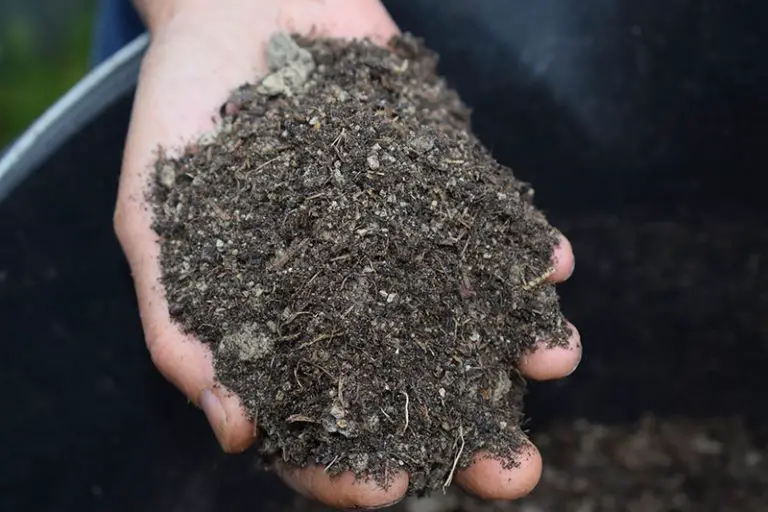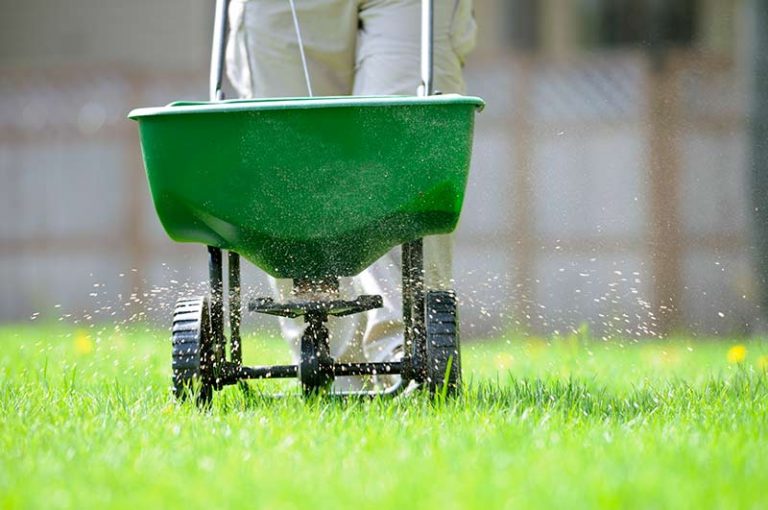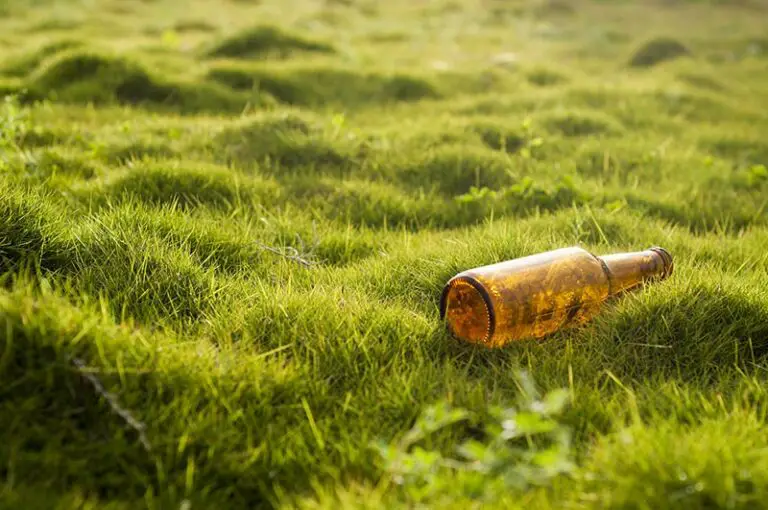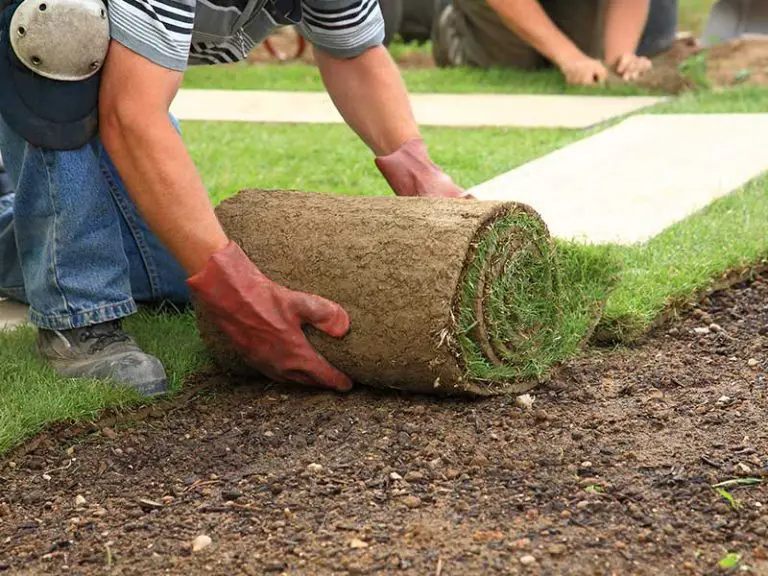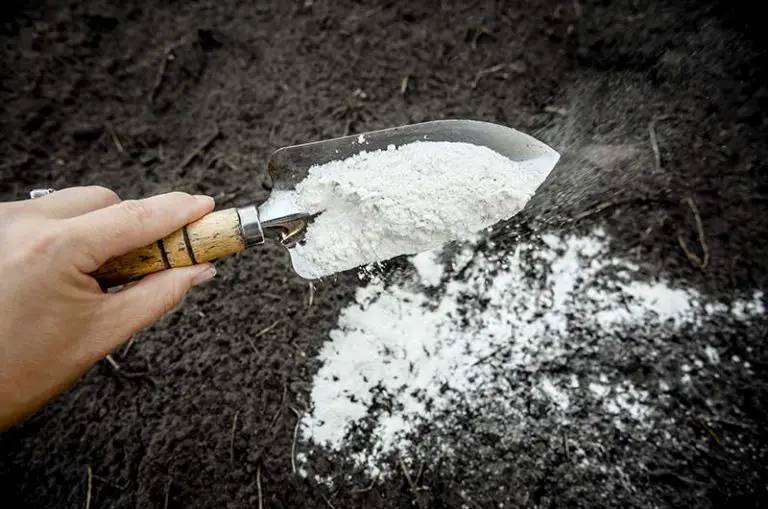Brew Your Own Compost Tea for a Healthy Lawn
Compost tea is simply the liquid format of solid compost. It provides all of the benefits of solid compost, in an easy-to-use, versatile liquid format. You can use compost tea as either a foliar spray or soil drench to improve the overall health of the turf and surrounding plants.
Although you’ll find many varying methods on how to make compost tea, the basic steps are always the same; all you need to do is steep some well-aged, high-quality compost in a bucket of non-chlorinated water for several days up to two weeks. Methods vary depending on whether you wish to make passive compost tea or aerated compost tea, in addition to any other ingredients you wish to add into your mix.
In this article, we explain methods on how to make compost tea for both passive and aerated brewing methods. Both methods will produce usable, nutrient-rich compost tea in a matter of days to weeks.
What is Compost Tea?
Compost tea is a liquid form of compost that you can create through a range of brewing processes. The resulting liquid contains all of the beneficial organisms contained in the original solid compost. Well-brewed compost tea will be filled with beneficial live organisms such as fungi, bacteria, protozoa, microarthropods, and nematodes. In addition to these organisms, compost tea is enriched with soluble nutrients like nitrogen, phosphorus, and potassium in a liquid format.
While there are a few different brewing methods, all compost teas are made using the same basic process; that is to mix and steep solid compost in water in order to create a nutrient and microorganism-rich liquid. You can use compost tea in a variety of ways around your yard, for example, as a soil drench, foliar spray, or addition for your irrigation system. We discuss the benefits of compost tea as a lawn or garden amendment in more detail in the next section.
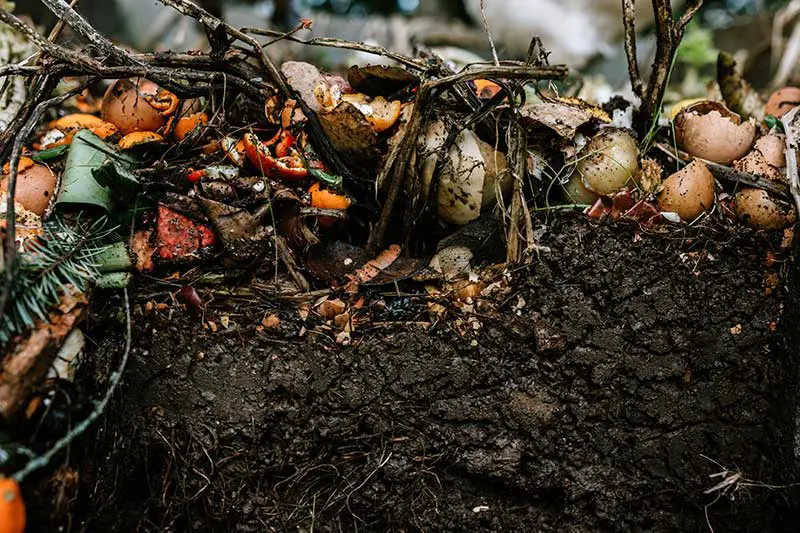
What Are the Benefits of Using Compost Tea?
As we’ve mentioned, compost tea provides plants with all of the benefits of solid compost, in a liquid format. In short, compost tea helps plants to grow more quickly, increases yields from crops, and improves overall soil health. Regular applications can decrease the likelihood of pest infestations and the spread of fungal disease among your plants or grass.
The advantage of having the nutrients in a liquid format is that they are in a form that’s more readily available to plants and better penetrates the turf layer. You can more easily concentrate the compost tea onto the parts of the plants that need it most, whether that be at the root or foliar level.
Improves Soil Health
The most obvious benefit of compost tea is that it can significantly improve soil health. All grasses, plants, and crops require nitrogen, phosphorus, and potassium, in addition to a number of other micronutrients. Without these nutrients, plants will suffer from stunted root and foliar growth; they are also more susceptible to stress from disease, pests, or extreme weather conditions like drought and frost.
Well-brewed compost tea contains these essential nutrients in a format readily taken-up by plant or grass roots. On top of this, the liquid format of compost tea encourages microbial growth by providing them with the ideal environment to thrive.
Improves Soil Structure
Regular applications of compost tea can improve the structure of the soil you apply it to; soil structure is a term that refers to the biological components that make up the soil. For soil to have a good structure, it must contain a range of live organisms, including fungi, bacteria, protozoa, nematodes, and microarthropods.
Well-brewed compost tea contains all of these organisms, thus improving the overall structure of the soil. In turn, this improves the soil’s nutrient content, water retention, and water accessibility to plant roots, thus reducing the necessity to water and add fertilizers as often.
Loosens Compact Soil
You can use compost tea to loosen compacted soil in your lawn or garden. When soil becomes compact, it pushes out the necessary spaces for water, air, and nutrients in the turf. Compact soil also prevents plants from growing extensive root systems, resulting in weaker growth. This problem is particularly prevalent in clay-heavy soils.
Stimulates Root Growth
With regular applications, compost tea stimulates root growth in nearby plants and grasses. This is due to the nutrients that it contains, with phosphorus being responsible for the growth of extensive root systems. The liquid format of compost tea allows it to penetrate deep into the turf, which further encourages deep root growth. Deeper root systems help to improve water retention in plants while also reducing runoff.
Adds Microbes to Foliage
Compost tea enables you to add beneficial microbes directly onto plants’ foliage. As it is typical to apply the compost tea in spray form, you can concentrate the spray on the external foliage of any plants you wish to give a boost in microbes.
These microbes help to prevent potential disease organisms from establishing themselves on the plant foliage by occupying the leaf surface; this, in turn, reduces the chances of the spread of diseases or fungal infestations among your healthy plants.
Avoids the Necessity of Chemical Amendments
As a general rule of thumb, it’s always best to avoid using chemical amendments or treatments on your lawn where possible. Compost tea is a great natural alternative to inorganic fertilizers, providing all of the same nutrients without the unnecessary chemicals or salts. These additional ingredients in inorganic treatments can be disastrously harmful to the nearby plants, causing fertilizer burn in high concentrations. They can also seriously damage the local ecosystem in the cases of leaching or runoff.
Even if you must use chemical treatments such as fertilizers, herbicides, or pesticides, you can apply compost tea to combat the negative effects these treatments can have on beneficial organisms in the soil. On top of this, you can fine-tune the ingredients in your DIY compost tea to provide your soil with exactly what it needs; this is a luxury that commercial pre-made products do not afford.
Types of Compost Tea: Passive Compost Tea vs Aerated Compost Tea
There are two different types of compost tea you can make at home, either passive compost tea or aerated compost tea.
Passive compost tea is the most common and simple type of compost tea to make. To make passive compost tea, you steep bags of compost similar to tea bags in water for a few weeks. The resulting liquid is the tea you can apply to your lawn or garden.
Aerated compost tea differs from passive compost tea in its ingredients and method. Firstly, it contains additional ingredients not involved in passive tea such as humic acid, fish hydrolysate, and kelp. Secondly, the brewing method involves aerating the mix using air/water pumps. This method is more costly than passive tea; however, it takes less time to brew and is often ready in a matter of days instead of several weeks.
The type of tea you choose depends on your budget and the timescale you have at your disposal. Both methods will produce an organic, nutrient-rich amendment you can use on your grasses, plants, or crops. We have explained methods on how to make compost tea of both types in the following section.
How to Make Compost Tea
If you have been doing research, you’ve probably come to find several different methods on how to make compost tea. The truth is that there is no single definitive way to make compost tea; this is providing you follow the basic formula of steeping solid compost in non-chlorinated water.
With that said, we have provided two effective methods to make either passive compost tea or aerated compost tea below.
How to Make Passive Compost Tea
Follow these steps to produce passive compost tea over the course of one to two weeks.
What You Need:
- 5 gallons of water (non-chlorinated, ideally rainwater)
- 1 shovel of compost (must be well-spent and completely finished)
- A handful of garden soil
- A burlap sack
- A 5-gallon bucket or tub
Steps:
- Take 1 shovel scoops worth of well-aged compost and place it into your burlap sack. Add in a handful of garden soil for some additional nutrients and organisms.
- Place the burlap sack into a 5-gallon bucket or tub.
- Fill the tub to the brim with water. The water must be non-chlorinated – ideally, this should be rainwater.
- Let the mixture steep for up to two weeks – this allows the water-soluble nutrients to infuse into the water. Stir the mixture every day or two. Take note that the ideal brewing temperature for compost tea is between 68 and 72°F. The longer you leave the mixture to brew, the more enriched it will be with nutrients and microbes.
- After steeping, remove the sack from the bucket.
- Dilute the resulting liquid until it resembles the color of weak tea. As a rough guide, you should use a ratio of about 10 parts water to 1 part compost tea. You can then apply this diluted mixture to your lawn or garden.
More Tips for Making Passive Compost Tea
- It’s best to apply passive compost tea to plant foliage in the early morning, afternoon, or on cloudy days. The liquid can act as a magnifier for UV rays, which can fry plants under intense sunlight.
- Apply passive compost tea when it is forecast to be dry for several days following the application. Rainwater can wash away your compost tea, robbing your soil of its benefits and potentially harming the nearby environment.
- Make sure to dilute passive compost tea before using it if it resembles a color stronger than that of weak tea. Undiluted compost tea can be too harsh for grass or plants, temporarily damaging them rather than benefiting them.
- It’s crucial to use well-aged compost that has completely finished the composting process. This is to prevent the risk of introducing harmful pathogens through compost that isn’t yet fully decomposed. As a general rule, use compost that is aged to an absolute minimum of 6 months.
How to Make Aerated Compost Tea
Follow these steps to produce aerated compost tea in a matter of several days.
What You Need:
- 5 gallons of water (non-chlorinated, ideally rainwater)
- 2 to 4 cups of compost (well-aged and sieved)
- Burlap sack or other porous material (to hold compost, then to strain tea)
- 6.5-gallon bucket or tub with lid
- Aquarium air pump
- 3 to 6 feet of aquarium hosing
- A t-valve or cross valve (to multiply air streams)
- Aquarium bubblers or airstones (optional)
Steps:
- Fill a 6.5-gallon bucket or tub with water. If using tap water, leave the bucket overnight to remove chlorine. Rainwater is naturally chlorine-free and ready to use straight away.
- Fit the bucket of water with the aquarium air pump and hosing. Start the equipment to begin aerating the water.
- Place your mature compost in a burlap sack or similar porous material container. Place this bag of compost into your bucket of water.
- Either stir or gently massage the contents of the bag within the water.
- Leave the mixture to aerate for 1 hour up to 3 days. The longer you leave it, the more enriched a mixture you will create.
- After leaving the mixture to steep, filter the resulting liquid through a porous material such as cheesecloth or a nylon stocking. This will leave you with usable compost tea. If necessary, dilute the mixture until it resembles the color of weak tea.
More Tips for Making Aerated Compost Tea
- Aerated compost tea is most effective when you supplement it with additional organic matter. This ensures that the beneficial bacteria and fungi in the compost tea are well-fed and will continue to benefit your soil over a long time. Add compost, mulches including straw mulch, paper mulch, or wood mulch, or grow a cover crop such as clover.
- For the process to be successful, you must supply the aerated compost tea with oxygen constantly while brewing. Without sufficient oxygen, the beneficial organisms in the tea will die off, making the liquid relatively useless.
- Avoid using additives that some other methods suggest. With aerated compost tea, it’s best to just stick with compost and water in your mixture. Other additives may introduce harmful pathogens into your compost tea that may harm your plants or grass.
- Begin applying aerated compost tea to your soil when you would normally start applying compost, as opposed to starting mid-season. You can then continue to use new batches of compost tea regularly throughout the season.
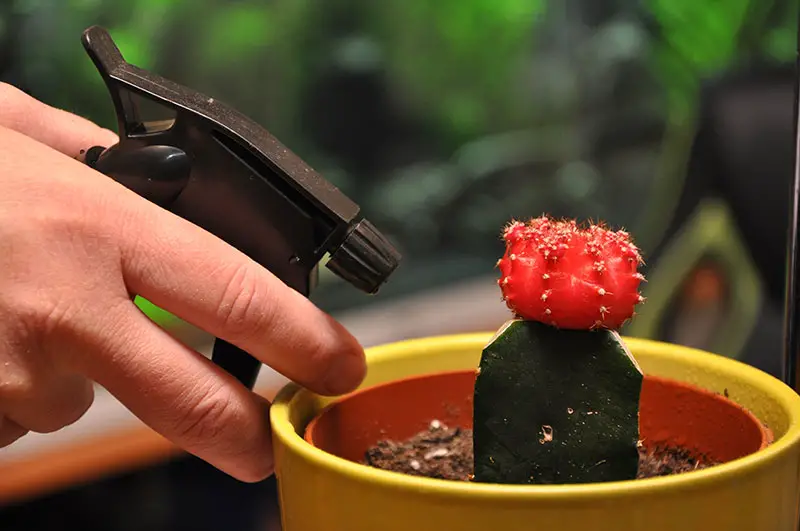
How to Use Compost Tea
Regardless of your brewing method, these steps explain how to most effectively use compost tea in your lawn or garden. You can use your compost tea as either a soil/root drench or as a direct foliar treatment.
1. Use Compost Tea Within 36 Hours of Brewing
The key piece of advice for using compost tea is to apply it to the soil within 36 hours of brewing, using it sooner rather than later. The longer you leave the mixture, the more of the living organisms and beneficial microbes will die off before you get a chance to add it to your soil. Your compost tea will keep for a day or two, but it will be essentially useless after about three days; therefore, it’s best to use it as soon as possible after brewing.
2. Using Compost Tea as a Soil or Root Drench
The first way in which you can use compost tea in your lawn or garden is as a soil drench. This will enrich your grass or plants at root level, encouraging deep root growth and stronger, more resilient foliage.
Place your compost tea in a watering can. Apply the mixture to the soil in your lawn or garden beds, focussing it around the base of your plants. For best results in your garden beds, apply the compost tea about two weeks before you expect your plants to start budding. This is also a great amendment for soil around young or newly transplanted plants.
3. Using Compost Tea as a Foliar Treatment
Alternatively, you can use your compost tea as a foliar treatment by spraying it directly onto plant foliage. This method of application is best when trying to combat disease pathogens on plants’ upward growth.
Place your compost tea into a spray bottle before spraying the mixture directly onto plant foliage. You could also add ⅛ of a teaspoon of vegetable oil to help the mixture stick to the plants foliage. For this method, it’s especially important to ensure the compost tea is sufficiently diluted to avoid burning your plants; if the tea is dark brown, dilute it with non-chlorinated water until it’s a lighter shade similar to weak tea. Also, avoid using foliar sprays in the middle of the day to prevent unintentional foliage burn from the sun.


